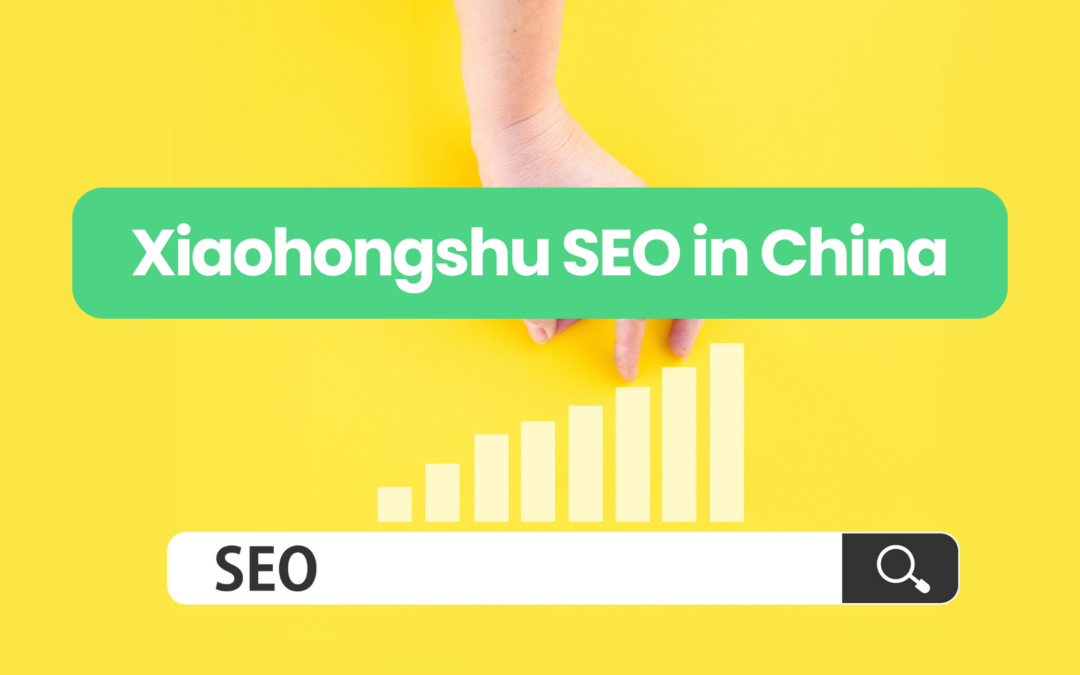In China’s content-driven marketing landscape, SEO on Xiaohongshu (Red little book) has become a powerful strategy for brands seeking visibility and conversion in a competitive digital space. With its strong social DNA and high conversion potential, Xiaohongshu plays a key role—especially in categories like new consumer products, beauty and skincare, parenting, and fashion. But Xiaohongshu is more than just a traffic generator; it’s a trusted space where user influence drives purchasing decisions. So, how can brands rise above the noise in this highly competitive ecosystem? The answer lies in mastering platform-specific SEO.
Why Xiaohongshu Matters for Brands
Xiaohongshu is not just a lifestyle-sharing app for China’s young consumers—it’s a powerful trust engine connecting brands and users. Consumers turn to the platform to find authentic reviews, get purchase advice, and make informed buying decisions. Content here doesn’t just inspire—it drives conversion.
For brands looking to break through, polished visuals alone won’t cut it. Success requires a smart grasp of platform algorithms and distribution mechanisms. This is where SEO comes in—it’s the secret to unlocking both search visibility and algorithmic recommendations.
What Is SEO on Xiaohongshu?
SEO involves researching user search behavior and strategically integrating high-value keywords into key areas of your content—like titles, captions, and hashtags. Doing so increases the chances of your posts surfacing in search results and getting picked up by the platform’s recommendation system.
In effect, effective SEO practices help the algorithm understand the context of your content. This allows it to be shown to the most relevant audience, boosting click-through rates, engagement, and ultimately, conversion.
At its core, SEO on Xiaohongshu is all about aligning with user intent. What you want to say, what your audience is searching for, and how the platform interprets your message must all be in sync. That alignment determines how visible—and impactful—your content will be.

How to Optimize Keywords Scientifically on Xiaohongshu
Keyword optimization on Xiaohongshu is far from a simple “word stuffing” exercise. It is a structured SEO strategy grounded in user search behavior, platform algorithms, and precise content positioning. To truly harness the marketing power of keywords, brands and creators must focus on four essential steps: research, selection, strategic placement, and ongoing refinement. Here’s a detailed, practical guide to doing it right.
Step 1: Keyword Research
Keyword research is the critical first step in building an effective Xiaohongshu SEO strategy. The objective is to understand what your target audience is searching for, how they phrase their queries, and what search terms reflect genuine purchase or engagement intent. The outcome of this step is the creation of a keyword pool that will guide future content development.
Use Xiaohongshu’s Search Suggest Feature
You can start by using Xiaohongshu’s search suggestion tool. Simply type in a core term relevant to your industry (e.g., “sunscreen”), and the platform will offer autocomplete suggestions such as “sunscreen for students,” “non-pilling sunscreen,” or “sunscreen recommendations.” These reflect real user interests and search behaviors—making them valuable keyword candidates.
Analyze Top-Performing Notes for High-Impact Keywords
Next, analyze the top-performing notes (posts) under these keywords. Look closely at the phrasing used in titles, descriptions, and hashtags. High-frequency keywords that appear across multiple popular posts often signal themes that resonate with the community and the platform’s algorithm.
Leverage Third-Party Tools for Deeper Data Insights
You can further deepen your analysis using third-party data tools like Chanmama or NewRank RED Data. These platforms provide analytics on keyword search volume, post saturation, trend momentum, and competition level. Such data helps you evaluate whether a keyword has strong potential—especially if it shows high growth with low competition, a winning combination in SEO.
It’s also important to go beyond keyword popularity and focus on search intent. Is the user looking for a recommendation? A personal review? A product comparison? Understanding the “why” behind a search helps shape more targeted and effective content.
Step 2: Keyword Selection
Once your keyword pool is established, the next step is selecting the most relevant and high-impact keywords to include in your content. The ideal keywords are those that align with your content’s core theme, address the pain points or needs of your target audience, and reflect your brand’s niche or vertical.
For example, if you’re a content creator in the parenting space, keywords like “baby sunscreen” or “pregnancy-safe skincare” are far more precise and effective than broad, generic terms like “summer products.” Similarly, if you’re in the beauty niche, you should prioritize specific search terms like “foundation for dry skin” or “best primer for oily skin,” which better match users’ search intent and buying behavior.
To maximize reach and relevance, it’s helpful to categorize your keywords into three types:
- Core keywords are your industry-defining or product-based terms, such as “serum,” “lipstick,” or “anti-aging cream.”
- Long-tail keywords are more specific and intent-driven, often tied to scenarios or user pain points—for instance, “best sunscreen for sensitive skin” or “foundation that doesn’t cake.”
- Supporting keywords include brand names, product features, or price-related terms.
By thoughtfully selecting and layering keywords this way, your content becomes more search-friendly, while maintaining authenticity and value for your audience. It also helps position your profile and content within relevant search and recommendation streams across Xiaohongshu’s algorithm-driven ecosystem.
An Expansion Project in China? We Can Help You!
Step 3: Keyword Placement
Keyword placement should follow the principles of being natural, logically clear, and avoiding keyword stuffing, while also optimizing according to the platform’s content recognition algorithms. Key placement areas include:
Title: The title is crucial for attracting clicks. It’s recommended to place primary keywords near the front, combined with questions, reviews, or experiential phrases to boost appeal. For example:
“Dry Skin Savior | XXX Foundation Tested on Skin—No Caking, No Fading?”
First 100 Words of the Body: Xiaohongshu’s system typically prioritizes the beginning of the content for categorization and recognition. Therefore, keywords should be naturally integrated into the opening paragraph to clearly convey the main theme.
Tags and Topics: Use hashtags to supplement long-tail keywords or include platform-recommended topics (e.g., #SummerBaseMakeupGuide). This not only helps with search visibility but also enables entry into the recommended content pool.
Cover Image / Video Subtitles: For image or video content, adding keywords on the cover image—whether as a watermark or title text—can assist visual search recognition and improve click-through rates.
Comments and Interaction Prompts: Repeating keywords in comment prompts (e.g., “What sunscreens have you used that work well for dry skin?”) can help enhance content relevance and encourage secondary exposure.
Keyword placement isn’t about simple repetition; it requires structuring content and logic around keywords so that the result feels natural, credible, and professional. For example, instead of forcefully inserting “sunscreen recommendation,” express the theme through statements like “Reviewing 5 sunscreens tested by sensitive skin users with zero irritation.”
Step 4: Data Review and Dynamic SEO
Keyword optimization is not a one-time task but an ongoing iterative process. After publishing content, regularly review its data performance to assess whether the keywords are delivering the expected results:
- Check Note Source Analytics: Xiaohongshu business or creator accounts allow you to see “Note Exposure Sources,” helping you understand whether traffic comes from search, topics, or recommendations.
- Analyze Keyword Conversion Chains: Pay attention to keywords with “high search volume but low clicks” to identify if the title needs optimization. Also monitor content with “high exposure but weak conversion” to see if keyword relevance or content focus needs improvement.
- Track Keyword Popularity Trends: Some seasonal keywords (e.g., “618 Sunscreen Recommendations,” “Refreshing Summer Base Makeup”) have time-sensitive value and should be updated or supplemented timely.
By continuously adjusting keyword combinations, content angles, and expression styles, you can transform a single piece of content into a “keyword matrix” that attracts users through multiple entry points, maximizing both traffic and conversions.
Conclusion
As China’s content marketing enters a stage of refined and precise operations, SEO on Xiaohongshu is no longer an optional add-on but an essential core capability for brands to attract traffic, earn trust, and establish a conversion loop. Through scientific methodology and systematic execution, SEO strategies not only increase the chances of being “discovered” but also play a crucial role in being “understood,” “trusted,” and ultimately “purchased.”
Whether you are a brand newly entering Xiaohongshu, a content operator, or an overseas company aiming to leverage Xiaohongshu to penetrate the Chinese market, SEO remains the key strategy to enhance exposure efficiency, precisely reach target users, and maximize content value.
STAiiRS specializes in Xiaohongshu SEO and China market growth strategies, committed to helping brands develop effective, actionable content plans and traffic acquisition tactics. If you want to improve your account performance or plan platform advertising strategies, feel free to contact us for personalized strategic consultations and practical recommendations.


Recent Comments